
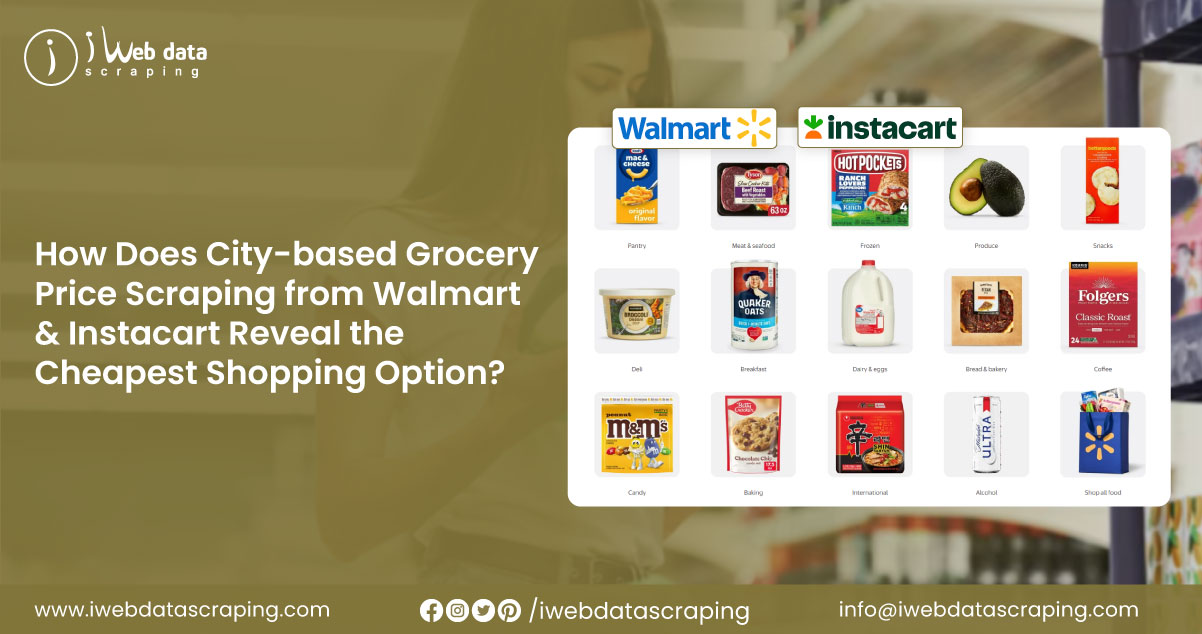
With grocery prices continuing to rise, making informed shopping decisions has become essential for households across the U.S. Whether you're a budget-conscious family or an urban professional managing rising costs, understanding where to get the best value matters. City-based Grocery Price Scraping from Walmart & Instacart offers a powerful way to compare costs and make smarter choices. By analyzing real-time pricing data across major cities like New York, Los Angeles, Chicago, Dallas, and Miami, consumers gain valuable insights into which platform offers better deals for their weekly essentials. Through our Walmart Grocery Delivery Data Scraping Services, we uncover consistent low-pricing trends across a broad range of everyday items. Meanwhile, our Instacart Grocery Delivery Data Scraping Services highlight how convenience, store partnerships, and local availability influence pricing on the platform. This analysis empowers shoppers to evaluate where they shop and how city-specific dynamics shape the actual cost of groceries.
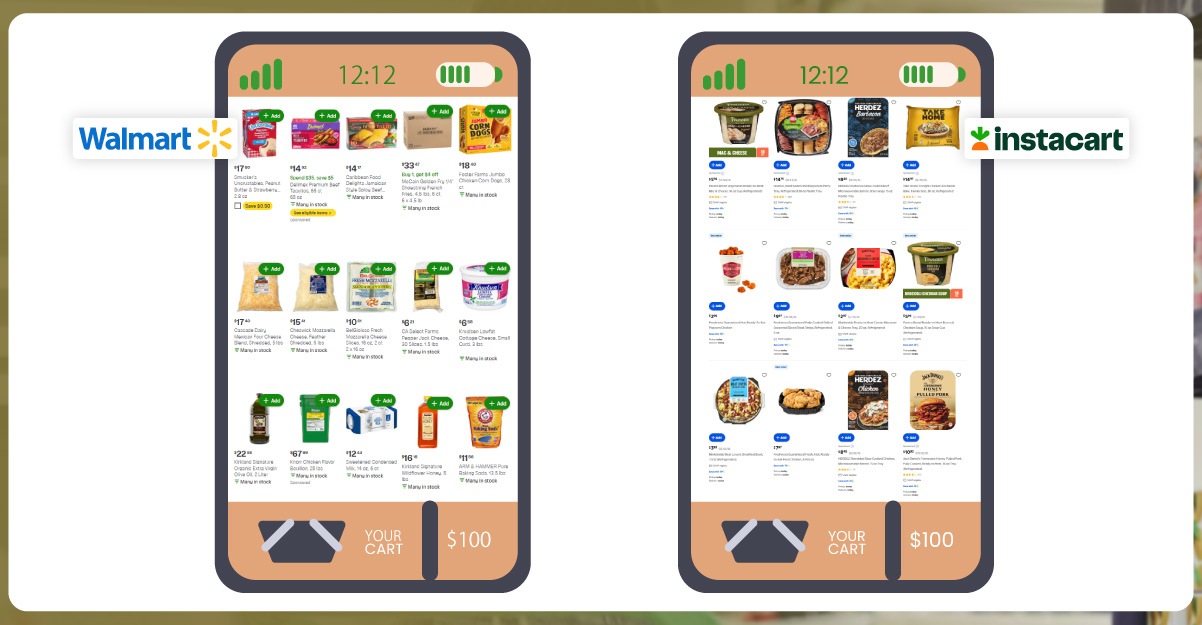
City-based grocery price scraping focuses on collecting and analyzing prices of identical or closely matched grocery items across different locations and platforms. Walmart and Instacart operate within very different models—Walmart is a national retail giant known for low pricing and integrated delivery. Instacart sources products from multiple local stores, often adding convenience fees and markups. Examining these two platforms side-by-side reveals clear pricing patterns that vary by city and item category. Utilizing Walmart Grocery Datasets, analysts can evaluate consistent base pricing and bulk discount trends, while Instacart Grocery Datasets reveal variability influenced by store partnerships and service layers. When we Extract Walmart vs Instacart Grocery Prices, the goal is to provide localized transparency—helping consumers and businesses identify which platform offers the better deal for a weekly grocery basket. This insight is essential for price-sensitive shopping and strategic retail planning in today's fluctuating grocery market.

Walmart vs Instacart in NYC
New York City's grocery market reflects the city's fast-paced, high-cost living. Our research—Scraping Instacart & Walmart Grocery Data for Cost Analysis—reveals a noticeable pricing gap between platforms. A standard basket of items, including milk, eggs, bread, chicken, rice, bananas, lettuce, cheese, cereal, and bottled water, averaged $82.40 on Instacart versus $66.10 at Walmart, a nearly 25% difference. This price hike on Instacart stems from several factors:
Though Instacart offers ultra-fast delivery, Walmart stands out for affordability. Using a Walmart Product Data Scraper, we observed consistently low pricing. Combined with Walmart Grocery Delivery Scraping API Services, this data empowers consumers and analysts to evaluate the best value. Walmart's lower base prices and free pickup options give it a competitive edge for New Yorkers seeking savings.
Instacart Narrowly Edges Out Walmart in LA
In Los Angeles, where navigating to a Walmart store isn't always convenient due to traffic and urban sprawl, Instacart surprisingly edged out Walmart in pricing—$73.20 versus $74.00 for a typical grocery basket. The slight advantage came from Instacart's local partnerships with affordable chains like Smart & Final and Aldi, helping to offset added fees. Promotional discounts and loyalty program perks further enhanced the value of Instacart users. This price behavior was made transparent through our Instacart Product Data Scraper, offering city-specific insights. The narrow margin also underscores the importance of Web Scraping Grocery App Data, where store selection within a platform can dramatically impact cost. Combined with Web Scraping Quick Commerce Data, these insights reveal that even minor pricing differences in urban markets like Los Angeles can shape consumer preferences. Ultimately, shoppers in LA benefit most by comparing not just platforms—but also the stores behind them.
The Walmart Advantage in the Windy City
The pricing difference was one of the largest in Chicago, where Walmart has a strong presence with several supercenters. A weekly grocery basket costs $62.80 at Walmart, compared to $79.50 via Instacart. Key findings included:
Even with a delivery pass on Instacart, Walmart's combination of base pricing and promotions offered superior value, especially for larger households.
Walmart's Low Prices Shine in Texas
Dallas, known for its suburban sprawl and car-centric lifestyle, naturally aligns with Walmart's in-store and curbside model. Our scraping of comparable grocery baskets revealed $59.90 from Walmart, compared to $76.20 from Instacart. This stark difference was observed across key staples:
The takeaway? In cities where driving to a store is easy and expected, Walmart's pricing dominance is more pronounced, while Instacart appears to be a costly convenience.
Instacart's Flexibility Pays Off in Miami
With its diverse cultural and culinary preferences, Miami had a unique pricing dynamic. Instacart offered a curated experience, allowing users to pick from specialty stores like Sedano's, Publix, and even international grocers. For customers looking for niche products, this made Instacart incredibly valuable.
However, when focusing solely on a standard American household grocery list, Walmart still came out cheaper—$68.70 compared to Instacart's $77.50. Notably:
Thus, while Walmart wins on cost, Instacart still offers significant value in variety and accessibility.
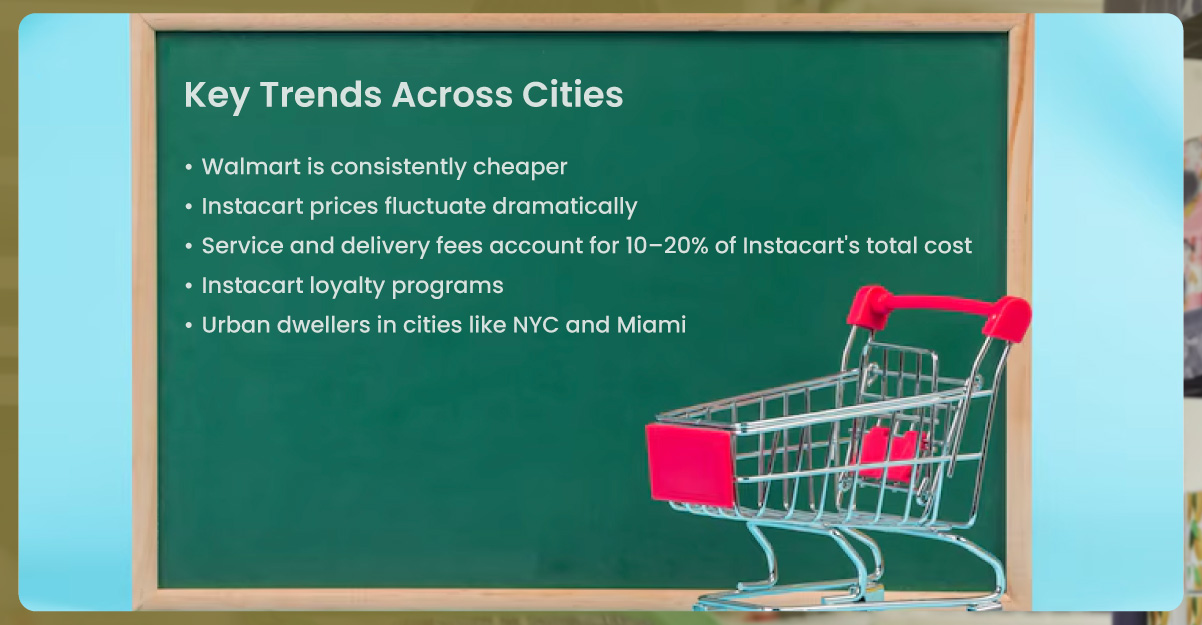
Analyzing the scraped data from all five cities reveals several broader trends:
Get started today with fully customized data scraping solutions tailored to your business needs!
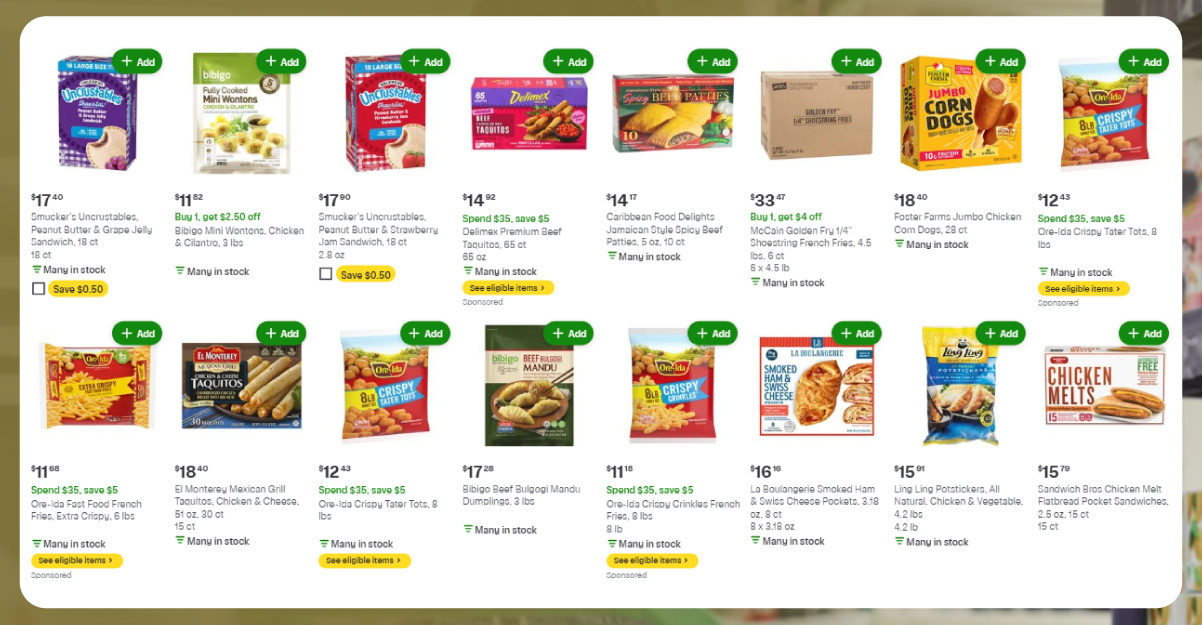
For budget-conscious shoppers who don't mind waiting a few hours or using curbside pickup, Walmart remains the most cost-effective option in most major cities. Its consistent pricing, absence of service fees, and frequent in-house promotions make it attractive for those aiming to reduce their weekly grocery expenses. Through Grocery Data Scraping Services, we observed that Walmart's structured pricing strategy delivers predictable value across regions. In contrast, for those who prioritize speed, flexibility, and access to a broader selection of local or specialty grocery stores, Instacart is a convenient—though more expensive—solution. With features like same-hour delivery and partnerships with niche retailers, Instacart meets the needs of busy urban shoppers. However, these benefits often come with higher markups and added fees. By leveraging Quick Commerce Data Intelligence, businesses and consumers can better understand the trade-offs between affordability and convenience, helping them make smarter, location-specific grocery shopping decisions.
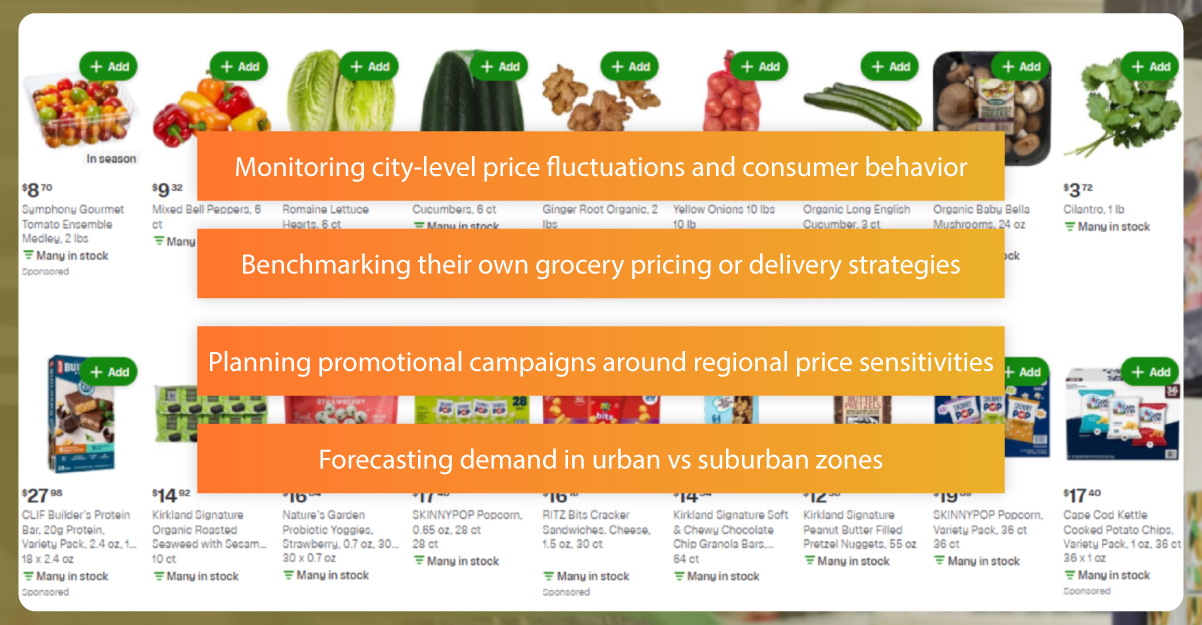
City-based grocery price scraping isn't just a tool for everyday shoppers—it's a strategic asset for businesses across the grocery and retail supply chain. Retail analysts, CPG brands, and delivery service providers can derive actionable insights in the following ways:
Real-time pricing data allows businesses to track how grocery costs change across cities, helping identify inflationary trends, pricing anomalies, and shifts in consumer preferences at a hyper-local level.
By comparing their prices with competitors in specific cities, brands and platforms can assess where they are over- or under-priced. This enables smarter pricing adjustments and better delivery fee structuring to stay competitive.
Understanding which cities are more cost-sensitive helps design location-specific promotions, discount offers, and loyalty incentives that resonate with the local consumer base.
Analyzing how price impacts buying behavior helps forecast demand more accurately. Businesses can then optimize inventory levels, delivery routes, and product availability based on city density and shopping patterns.
How iWeb Data Scraping Can Help You?
Who's cheaper for your weekly groceries—Walmart or Instacart? The answer isn't one-size-fits-all. It depends on your location, shopping preferences, and what's in your basket. According to Grocery and Supermarket Store Datasets, Walmart often delivers lower base prices across most cities. However, Instacart's convenience, diverse store partnerships, and rapid delivery appeal to urban shoppers, sometimes justifying the higher cost.
That's why Grocery Pricing Data Intelligence is essential. By using real-time grocery price comparison tools powered by web scraping, consumers can see exactly where their money goes—and how to save it. Whether you're managing the impact of food inflation or simply striving for smarter weekly spending, real-time data empowers better choices. In a rapidly changing retail environment, data-driven grocery shopping is no longer a luxury—it's a necessity for staying ahead.
Experience top-notch web scraping service and mobile app scraping solutions with iWeb Data Scraping. Our skilled team excels in extracting various data sets, including retail store locations and beyond. Connect with us today to learn how our customized services can address your unique project needs, delivering the highest efficiency and dependability for all your data requirements.